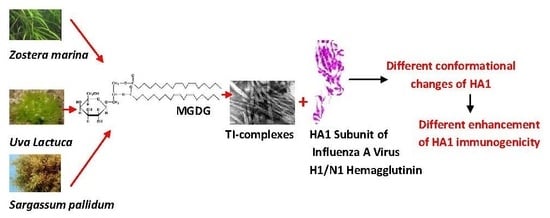Modulation of Immunogenicity and Conformation of HA1 Subunit of Influenza A Virus H1/N1 Hemagglutinin in Tubular Immunostimulating Complexes
Abstract
:1. Introduction
2. Results
2.1. Effect of MGDGs from Different Marine Macrophytes on the Anti-HA1 Response
2.2. Effect of MGDGs from Different Marine Macrophytes on the Cytokine Profile
2.3. Effect of MGDGs on HA1 Conformation
2.3.1. Differential Scanning Calorimetry (DSC)
2.3.2. Intrinsic Fluorescence
3. Discussion
4. Materials and Methods
4.1. Protein Antigen
4.2. Marine Macrophytes and Preparation of MGDG
4.3. Preparation of MGDG-HA1 Samples for DSC and Spectroscopic Studies
4.4. Preparation of HA1-Containing TI-Complexes
4.5. Animals and Immunization
4.6. ELISA
4.7. Calorimetry
4.8. Fluorescence Spectroscopy
Acknowledgments
Author Contributions
Conflicts of Interest
Abbreviations
| HA | Hemagglutinin |
| TI-complex | Tubular immunostimulating complex |
| MGDG | Monogalactosyldiacylglycerol |
| ELISA | Enzyme-linked immunosorbent assay |
| DSC | Differential scanning calorimetry |
| GM-CSF | Granulocyte-macrophage colony-stimulating factor |
| IL | Interleukin |
| IFN | Interferon |
| PBS | Phosphate-buffered saline |
| SDS-PAGE | Sodium dodecyl sulfate polyacrylamide gel electrophoresis |
References
- Suerbaum, S.; Hahn, H.; Burchard, G.-D.; Kaufmann, S.H.E.; Schulz, T.F. Medizinische Mikrobiologie und Infektologie, 7th ed.; Springer: Berlin/Heidelberg, Germany, 2012; pp. 476–481. [Google Scholar]
- Howard, W.A.; Essen, S.C.; Strugnell, B.W.; Russell, C.; Barass, L.; Reid, S.M.; Brown, I.H. Reassortant pandemic (H1N1) 2009 virus in pigs, United Kingdom. Emerg. Infect. Dis. 2011, 17, 1049–1052. [Google Scholar] [CrossRef] [PubMed]
- Arunorat, J.; Charoenvisal, N.; Woonwong, Y.; Kedkovid, R.; Jittimanee, S.; Sitthicharoenchai, P.; Kesdangsakonwut, S.; Poolperm, P.; Thanawongnuwech, R. Protection of human influenza vaccines against a reassortant swine. Res. Vet. Sci. 2017, 114, 6–11. [Google Scholar] [CrossRef] [PubMed]
- Houser, K.; Subbarao, K. Influenza vaccines: challenges and solutions. Cell Host Microbe 2015, 17, 295–300. [Google Scholar] [CrossRef] [PubMed]
- Wilson, I.A.; Skehel, J.J.; Wiley, D.C. Structure of the hemagglutinin membrane glycoprotein of influenza virus at 3Å resolution. Nature 1981, 289, 366–373. [Google Scholar] [CrossRef] [PubMed]
- Wilson, I.A. Structural basis of immune recognition of influenza virus hemagglutinin. Annu. Rev. Immunol. 1990, 8, 737–771. [Google Scholar] [CrossRef] [PubMed]
- Ekiert, D.C.; Bhabha, G.; Elsliger, M.-A.; Friesen, R.H.E.; Jongeneelen, M.; Throsby, M.; Goudsmit, J.; Wilson, I.A. Antibody recognition of a highly conserved influenza virus epitope. Science 2009, 324, 246–251. [Google Scholar] [CrossRef] [PubMed]
- Sączyńska, V. Influenza virus hemagglutinin as a vaccine antigen produced in bacteria. Acta Biochim. Pol. 2014, 61, 561–572. [Google Scholar] [PubMed]
- Kostetsky, E.Y.; Sanina, N.M.; Mazeika, A.N.; Tsybulsky, A.V.; Vorobyeva, N.S.; Shnyrov, V.L. Tubular immunostimulating complex based on cucumarioside A2-2 and monogalactosyldiacylglycerol from marine macrophytes. J. Nanobiotechnol. 2011, 9, 35. [Google Scholar] [CrossRef] [PubMed]
- Sanina, N.M.; Kostetsky, E.Y.; Shnyrov, V.L.; Tsybulsky, A.V.; Novikova, O.D.; Portniagina, O.Y.; Vorobieva, N.S.; Mazeika, A.N.; Bogdanov, M.V. The influence of monogalactosyldiacylglycerols from different marine macrophytes on immunogenicity and conformation of protein antigen of tubular immunostimulating complex. Biochimie 2012, 94, 1048–1056. [Google Scholar] [CrossRef] [PubMed]
- Vorobieva, N.; Sanina, N.; Vorontsov, V.; Kostetsky, E.; Mazeika, A.; Tsybulsky, A.; Kim, N.; Shnyrov, V. On the possibility of lipid-induced regulation of conformation and immunogenicity of influenza A Virus H1/N1 hemagglutinin as antigen of TI-complexes. J. Mol. Microbiol. Biotechnol. 2014, 24, 202–209. [Google Scholar] [CrossRef] [PubMed]
- Bentz, J.; Mittal, A. Architecture of the influenza hemagglutinin membrane fusion site. Biochim. Biophys. Acta 2003, 1614, 24–35. [Google Scholar] [CrossRef]
- Sanina, N.M.; Goncharova, S.N.; Kostetsky, E.Y. Fatty acid composition of individual polar lipid classes from marine macrophytes. Phytochemistry 2004, 65, 721–730. [Google Scholar] [CrossRef] [PubMed]
- Sanina, N.M.; Goncharova, S.N.; Kostetsky, E.Y. Seasonal changes of fatty acid composition and thermotropic behavior of polar lipids from marine macrophytes. Phytochemistry 2008, 69, 1517–1527. [Google Scholar] [CrossRef] [PubMed]
- Kurganov, B.I.; Lyubarev, A.E.; Sanchez-Ruiz, J.M.; Shnyrov, V.L. Analysis of differential scanning calorimetry data for proteins. Criteria of validity of onestep mechanism of irreversible protein denaturation. Biophys. Chem. 1997, 69, 125–135. [Google Scholar] [CrossRef]
- Permyakov, E.A. The Method of Intrinsic Protein Luminescence; Nauka: Moscow, Russia, 2003. [Google Scholar]
- Barberis, I.; Martini, M.; Iavarone, F.; Orsi, A. Available influenza vaccines: immunization strategies, history and new tools for fighting the disease. J. Prev. Med. Hyg. 2016, 57, E41–E46. [Google Scholar] [PubMed]
- Xuan, C.; Shi, Y.; Qi, J.; Zhang, W.; Xiao, H.; Gao, G.F. Structural vaccinology: structure-based design of influenza A virus hemagglutinin subtype-specific subunit vaccines. Protein Cell 2011, 2, 997–1005. [Google Scholar] [CrossRef] [PubMed]
- Chiu, F.F.; Venkatesan, N.; Wu, C.R.; Chou, A.H.; Chen, H.W.; Lian, S.P.; Liu, S.J.; Huang, C.C.; Lian, W.C.; Chong, P.; Leng, C.H. Immunological study of HA1 domain of hemagglutinin of influenza H5N1 virus. Biochem. Biophys. Res. Commun. 2009, 383, 27–31. [Google Scholar] [CrossRef] [PubMed]
- Khurana, S.; Verma, S.; Verma, N.; Crevar, C.J.; Carter, D.M.; Manischewitz, J.; King, L.R.; Ross, T.M.; Golding, H. Properly folded bacterially expressed H1N1 hemagglutinin globular head and ectodomain vaccines protect ferrets against H1N1 pandemic influenza virus. PLoS ONE 2010, 5, e11548. [Google Scholar] [CrossRef] [PubMed] [Green Version]
- Sjolander, A.; Cox, J.C.; Barr, I.G. ISCOMs: an adjuvant with multiple functions. J. Leukoc. Biol. 1998, 64, 713–723. [Google Scholar] [PubMed]
- Kidd, P. Th1/Th2 balance: the hypothesis, its limitations, and implications for health and disease. Altern. Med. Rev. 2003, 8, 223–246. [Google Scholar] [PubMed]
- Galla, H.J.; Sackmann, E. Lateral diffusion in the hydrophobic region of membrane: use of pyrene excimers as optical probes. Biochim. Biophys. Acta 1974, 339, 103–115. [Google Scholar] [CrossRef]
- Avilov, S.A.; Tishchenko, L.Y.; Stonik, V.A. Structure of cucumarioside A2–2-A triterpene glycoside from the holothurian Cucumaria japonica. Chem. Nat.Compounds 1984, 20, 759–760. [Google Scholar] [CrossRef]
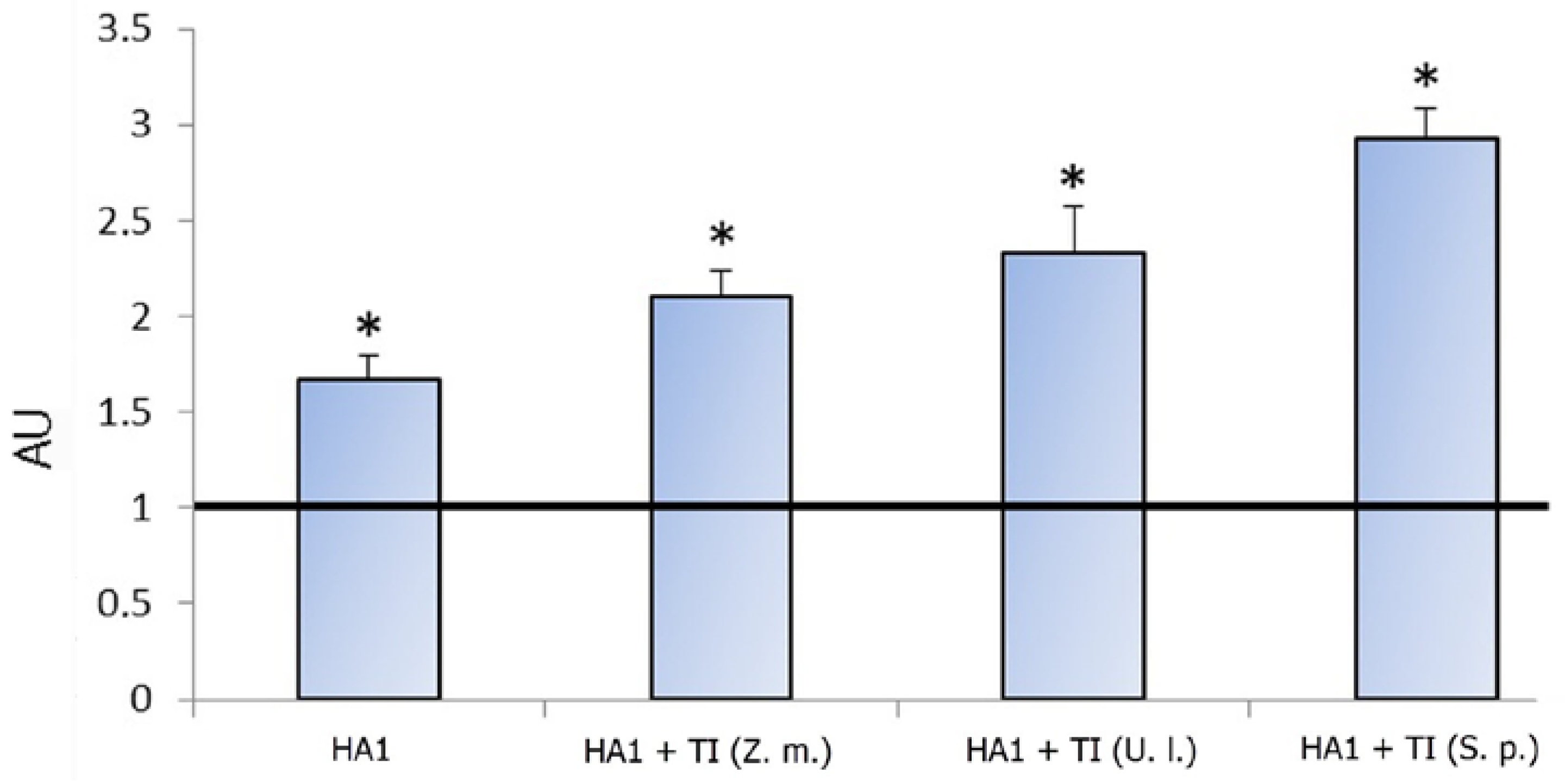
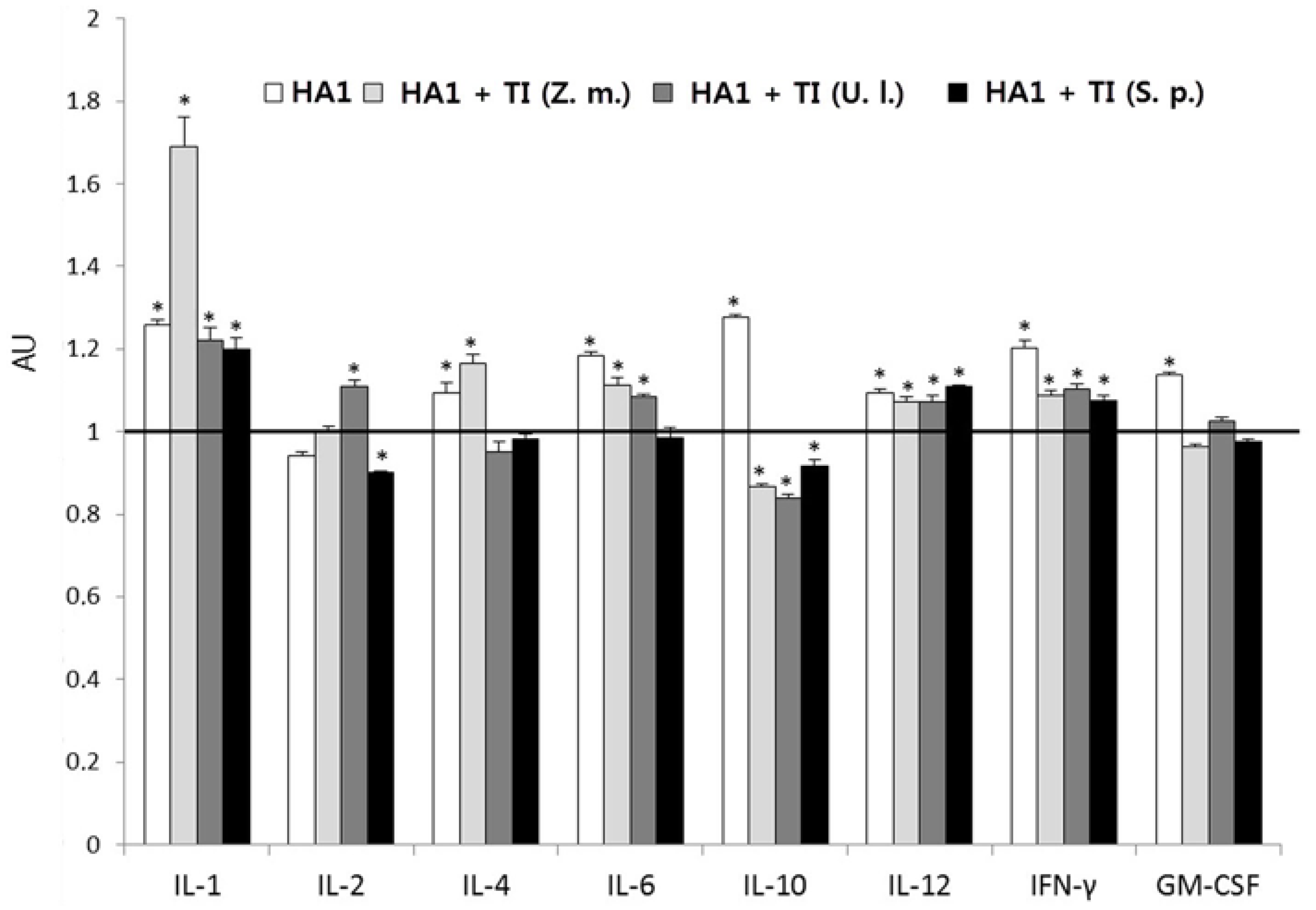
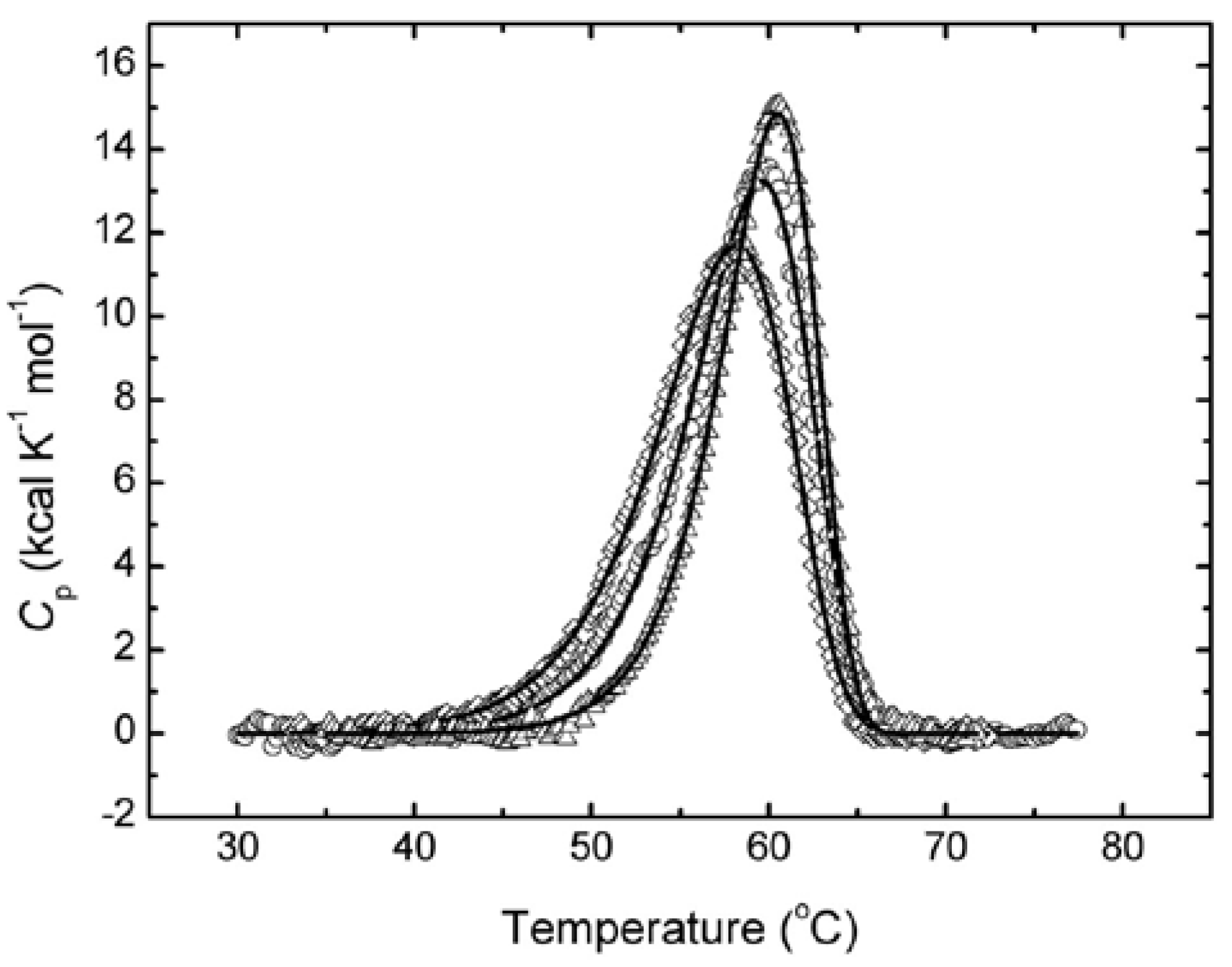
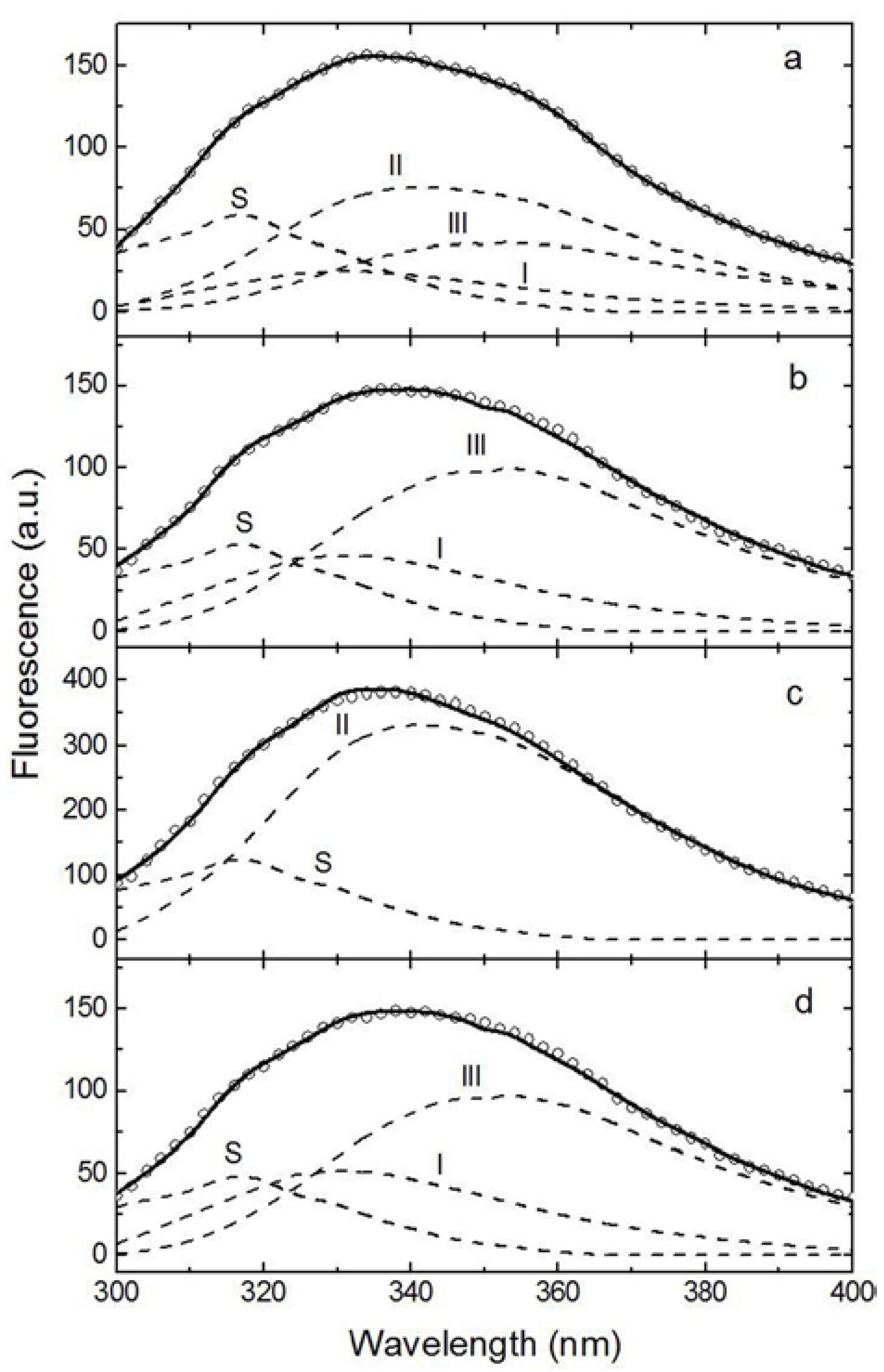
| Sample | EA 1 (kcal/mol) | T* (K) 2 | r3 |
|---|---|---|---|
| HA1 | 65.7 ± 1.3 | 332.6 ± 0.3 | 0.9999 |
| HA1 + MGDG from S. pallidum | 57.5 ± 1.2 | 331.3 ± 0.2 | 0.9998 |
| HA1 + MGDG from Z. marina | 81.7 ± 1.4 | 334.1 ± 0.4 | 0.9999 |
| Sample | Spectral Forms | |||
|---|---|---|---|---|
| S (λmax = 317 nm) | I (λmax = 332 nm) | II (λmax = 342 nm) | III (λmax = 353 nm) | |
| HA1 | 20 ± 0.4 | 14 ± 0.1 | 41± 0.3 | 25 ± 0.3 |
| HA1 + MGDG from S. pallidum | 19 ± 0.3 | 23 ± 0.2 | 0 | 58 ± 0.4 |
| HA1 + MGDG from Z. marina | 21 ± 0.4 | 0 | 79 ± 0.6 | 0 |
| HA1 + MGDG from U. lactuca | 18 ± 0.2 | 27 ± 0.3 | 0 | 55 ± 0.5 |
© 2017 by the authors. Licensee MDPI, Basel, Switzerland. This article is an open access article distributed under the terms and conditions of the Creative Commons Attribution (CC BY) license (http://creativecommons.org/licenses/by/4.0/).
Share and Cite
Sanina, N.; Davydova, L.; Chopenko, N.; Kostetsky, E.; Shnyrov, V. Modulation of Immunogenicity and Conformation of HA1 Subunit of Influenza A Virus H1/N1 Hemagglutinin in Tubular Immunostimulating Complexes. Int. J. Mol. Sci. 2017, 18, 1895. https://doi.org/10.3390/ijms18091895
Sanina N, Davydova L, Chopenko N, Kostetsky E, Shnyrov V. Modulation of Immunogenicity and Conformation of HA1 Subunit of Influenza A Virus H1/N1 Hemagglutinin in Tubular Immunostimulating Complexes. International Journal of Molecular Sciences. 2017; 18(9):1895. https://doi.org/10.3390/ijms18091895
Chicago/Turabian StyleSanina, Nina, Ludmila Davydova, Natalia Chopenko, Eduard Kostetsky, and Valery Shnyrov. 2017. "Modulation of Immunogenicity and Conformation of HA1 Subunit of Influenza A Virus H1/N1 Hemagglutinin in Tubular Immunostimulating Complexes" International Journal of Molecular Sciences 18, no. 9: 1895. https://doi.org/10.3390/ijms18091895




